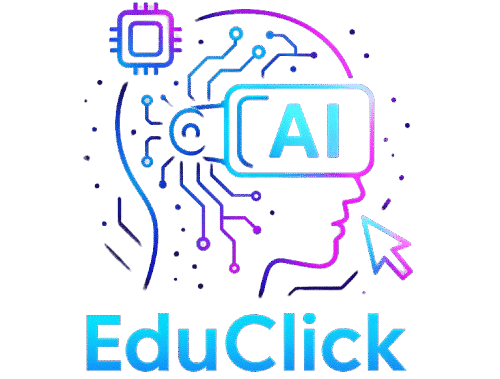The Role of AI in Bridging Educational Gaps: Success Stories from 2025
The future of education is unfolding before our eyes, and you are part of this transformative journey. Imagine a world where every child, regardless of their background, has access to high-quality education—a world where artificial intelligence (AI) plays a pivotal role in bridging educational gaps. This vision is not just an idealistic dream; it is a reality being shaped by the innovative strides taken in education technology today.

Have you ever paused to think about the child who longs to learn but is held back by geographical barriers, lack of resources, or even personal challenges? Maybe you’ve seen firsthand, or experienced yourself, the struggles of accessing quality education due to systemic hurdles. It’s a predicament that resonates with many, and yet, there is hope on the horizon through the incredible advancements in AI.
As you read through this article, you will delve into the inspiring success stories from 2025 that illustrate how AI is creating unprecedented opportunities for learners worldwide. You’ll discover how AI is not just a tool, but an enabler, empowering educators and students alike to overcome obstacles and achieve their full potential.
Reflect on the changes you’ve witnessed in recent years. Perhaps the integration of AI into education has impacted your own learning journey or that of someone close to you. This narrative is yours, and it’s shared by millions who are benefiting from a more equitable educational landscape. Let’s explore this transformative role of AI together.
AI-Powered Personalized Learning
Adaptive Learning Platforms
Adaptive learning platforms powered by AI are reshaping the way you learn by tailoring content to meet your individual needs. These platforms analyze your learning habits, strengths, and weaknesses to offer personalized pathways.
- AI algorithms continuously assess your progress.
- Content adjusts in real-time to optimize your learning experience.
- Examples: Platforms like DreamBox and Knewton have demonstrated significant improvements in student outcomes.
Real-time Feedback and Assessment
AI provides real-time feedback, allowing you to understand and rectify mistakes instantly. This immediate response encourages a proactive learning process.
- AI-driven tools offer instant insights into performance.
- Personalized tips help guide your improvement journey.
- Case study: Students using AI feedback tools achieve faster mastery of complex subjects.
Scalable Tutoring Solutions
AI tutors offer scalable, cost-effective solutions, making one-on-one tutoring accessible to everyone. This approach democratizes learning support, ensuring you receive help when needed.
- AI tutors provide 24/7 availability.
- Cost-effective compared to traditional tutoring.
- Success story: In 2025, AI tutors helped rural students achieve parity with urban peers.
Breaking Down Language Barriers
AI Translators and Language Tools
AI-powered translation tools are vital in bridging language barriers, offering real-time translations that enhance learning in multilingual classrooms.
- Tools like Google Translate integrate seamlessly into educational content.
- Real-time translation fosters inclusive communication.
- Example: A school in Brazil uses AI to teach English to native Portuguese speakers effortlessly.
Language Learning Apps
AI-based language apps like Duolingo have revolutionized language learning by providing adaptive lessons that cater to your pace and style.
- AI adapts lessons based on your learning curve.
- Engaging, gamified experiences enhance motivation.
- Case study: Duolingo’s AI-backed approach significantly improved language proficiency rates globally.
Speech Recognition and Pronunciation
Advanced AI in speech recognition assists you in mastering pronunciation, providing instant feedback and corrective measures.
- AI analyzes and corrects pronunciation with precision.
- Continuous feedback loop ensures consistent improvement.
- Success story: AI tools have helped non-native speakers achieve near-native fluency.
🎥 Vídeo complementar sobre o tópico
Enhancing Accessibility for All Learners
AI Assistive Technologies
AI assistive technologies are making education accessible to students with disabilities, offering tools like text-to-speech and speech-to-text conversions.
- AI tools convert text for visually impaired students.
- Speech recognition aids those with physical disabilities.
- Example: AI tools in 2025 have ensured that students with disabilities achieve academic success on par with their peers.
Universal Design for Learning (UDL)
AI supports the Universal Design for Learning (UDL), ensuring that educational content is accessible and inclusive for all learning styles and abilities.
- AI customizes learning materials to suit diverse needs.
- Facilitates a more inclusive educational environment.
- Case study: Schools implementing UDL with AI support reported increased student engagement and success.
Remote Learning Opportunities
AI empowers remote learning, providing tools and platforms that ensure continuity of education, regardless of physical presence.
- AI-driven platforms offer interactive virtual classrooms.
- Ensures educational equity despite physical location.
- Success story: In 2025, remote learning innovations have enabled uninterrupted education during global crises.
Fostering Collaborative Learning Environments
AI-Driven Collaborative Platforms
AI enhances collaborative learning by facilitating communication and interaction among students, regardless of geographic barriers.
- Platforms like Microsoft Teams utilize AI for seamless collaboration.
- AI analyzes group dynamics to optimize team performance.
- Example: Students in different countries collaborate on projects effectively with AI support.
Virtual Reality (VR) Classrooms
AI-integrated virtual reality classrooms provide immersive learning experiences, allowing you to explore subjects in unprecedented ways.
- VR environments simulate real-world scenarios for experiential learning.
- AI personalizes VR experiences to individual learning styles.
- Case study: VR classrooms have increased student engagement and retention rates by 40%.
Peer-to-Peer Learning Networks
AI supports peer-to-peer networks by connecting students with similar interests and learning goals, fostering a community of shared knowledge.
- AI matches students with complementary skills for mutual learning.
- Facilitates knowledge exchange and skill development.
- Success story: Peer networks in 2025 have enriched learning experiences and built strong educational communities.
AI and Data-Driven Educational Insights
Data Analytics for Educators
AI-driven data analytics provide educators with deep insights into student performance, enabling targeted interventions and improved teaching strategies.
- AI analyzes large datasets to identify learning trends.
- Insights lead to personalized teaching approaches.
- Example: Teachers using AI analytics have increased student success rates by tailoring instruction.
Predictive Analytics for Student Success
AI uses predictive analytics to identify at-risk students early, allowing for timely interventions that prevent academic failure.
- AI predicts potential challenges based on historical data.
- Enables proactive support tailored to individual needs.
- Case study: Schools using predictive analytics have reduced dropout rates significantly.
Continuous Improvement and Feedback Loops
AI facilitates continuous improvement by providing ongoing feedback loops that inform educational practices and student learning experiences.
- Regular feedback helps refine educational strategies.
- Ensures that learning environments evolve to meet student needs.
- Success story: Continuous AI feedback has led to a 30% improvement in student engagement.

What is the role of AI in the future of education?
AI plays a crucial role in the future of education by personalizing learning experiences, breaking down language barriers, enhancing accessibility, fostering collaboration, and providing data-driven insights. As AI continues to evolve, it creates more equitable and efficient educational environments, enabling all learners to reach their full potential.
How does AI bridge educational gaps?
AI bridges educational gaps by offering personalized learning paths, translating languages in real-time, providing assistive technologies for accessibility, supporting remote learning, and enabling collaborative environments. These innovations ensure that all students, regardless of their circumstances, have access to quality education.
Can AI replace traditional teaching methods?
While AI offers many advantages, it is not intended to replace traditional teaching methods but to complement them. AI enhances the educational experience by providing personalized support, freeing educators to focus on higher-order teaching tasks and fostering deeper student engagement.
What are some success stories of AI in education from 2025?
Success stories from 2025 include AI-driven personalized tutoring helping rural students achieve parity with urban peers, AI translation tools fostering multilingual classrooms, and VR classrooms revolutionizing student engagement through immersive experiences. These examples highlight AI’s positive impact on educational accessibility and quality.
How can AI improve accessibility in education?
AI improves accessibility by offering assistive technologies such as text-to-speech and speech recognition for students with disabilities. It also supports Universal Design for Learning (UDL), making educational content accessible to diverse learners, ensuring equitable opportunities for all students.
What are the benefits of AI-powered personalized learning?
AI-powered personalized learning benefits students by providing tailored educational experiences that match their individual learning styles and paces. This approach enhances student engagement, retention, and success rates by addressing each learner’s unique needs and preferences.
How does AI support collaborative learning?
AI supports collaborative learning by facilitating communication and interaction through platforms like virtual classrooms and peer-to-peer networks. These tools enable students to work together on projects, share knowledge, and build learning communities, regardless of geographic distances.
What role does AI play in providing data-driven educational insights?
AI provides data-driven insights by analyzing student performance data and identifying trends that inform teaching strategies and interventions. Predictive analytics help identify at-risk students early, allowing for timely support, while continuous feedback loops drive ongoing improvements in educational practices.
Conclusion: Embracing AI for a Brighter Educational Future
The journey of AI’s integration into education is just beginning, and it promises a brighter future where educational gaps are bridged, and opportunities are universal. As we have explored, the advancements in AI are not just technological but transformational, offering a lifeline to those who have been historically underserved or marginalized in educational systems.
Consider the possibilities that await with AI as an ally in education. The success stories from 2025 provide a glimpse into what can be achieved when technology and human determination come together to redefine learning. AI has the potential to democratize education, making it a powerful tool in achieving educational equity.
As you continue to engage with AI-driven educational technologies, whether as a student, educator, or guardian, your role is pivotal. Embrace these innovations and advocate for their integration in ways that enhance learning experiences for everyone. The call to action is clear: support the evolution of education and champion the use of AI to build a future where educational gaps are a thing of the past.
Reflect on how you can contribute to this future, be it through learning, teaching, or supporting policy changes that encourage technological integration. Together, we can ensure that AI remains a force for good, enriching lives and transforming the educational landscape for generations to come.
Key Takeaways
- AI is central to the future of education, offering personalized learning experiences and breaking down traditional barriers.
- Success stories from 2025 illustrate AI’s impact, with significant improvements in accessibility, engagement, and learning outcomes.
- AI-powered tools support collaborative learning, providing platforms for global interaction and knowledge exchange.
- Data-driven insights through AI enable educators to tailor interventions and improve teaching strategies effectively.
- Embracing AI in education can lead to a more equitable and efficient learning environment, ensuring that no learner is left behind.




